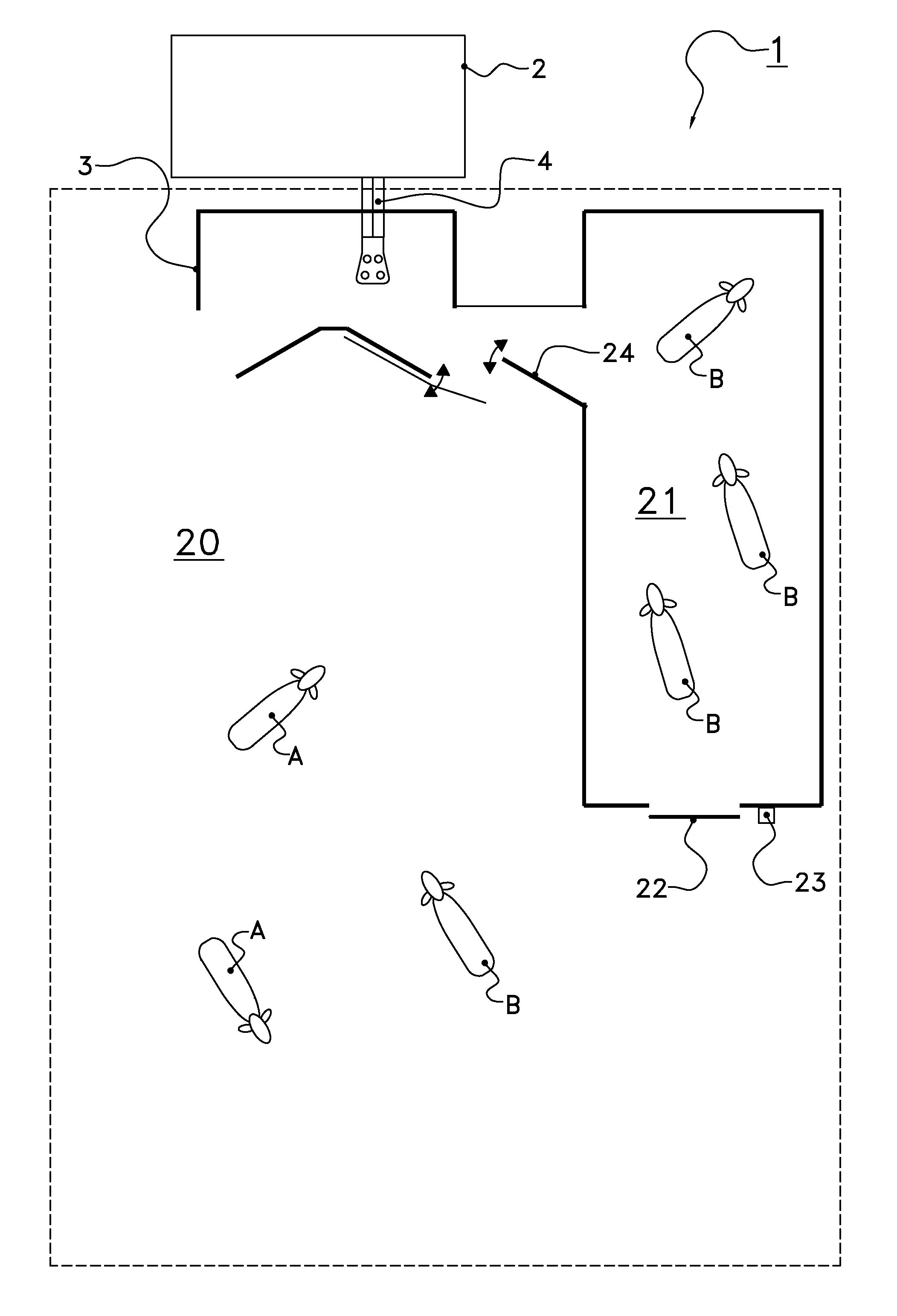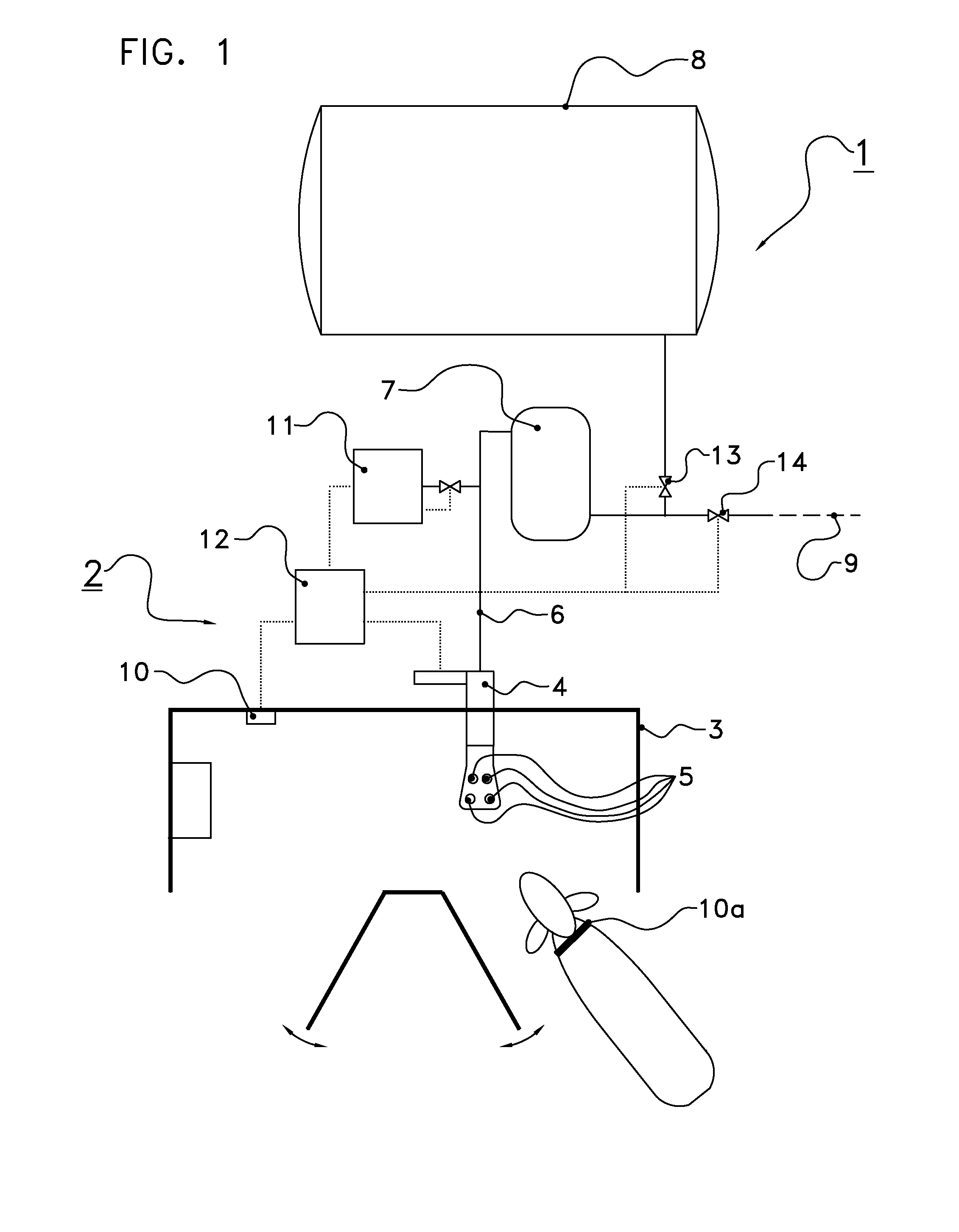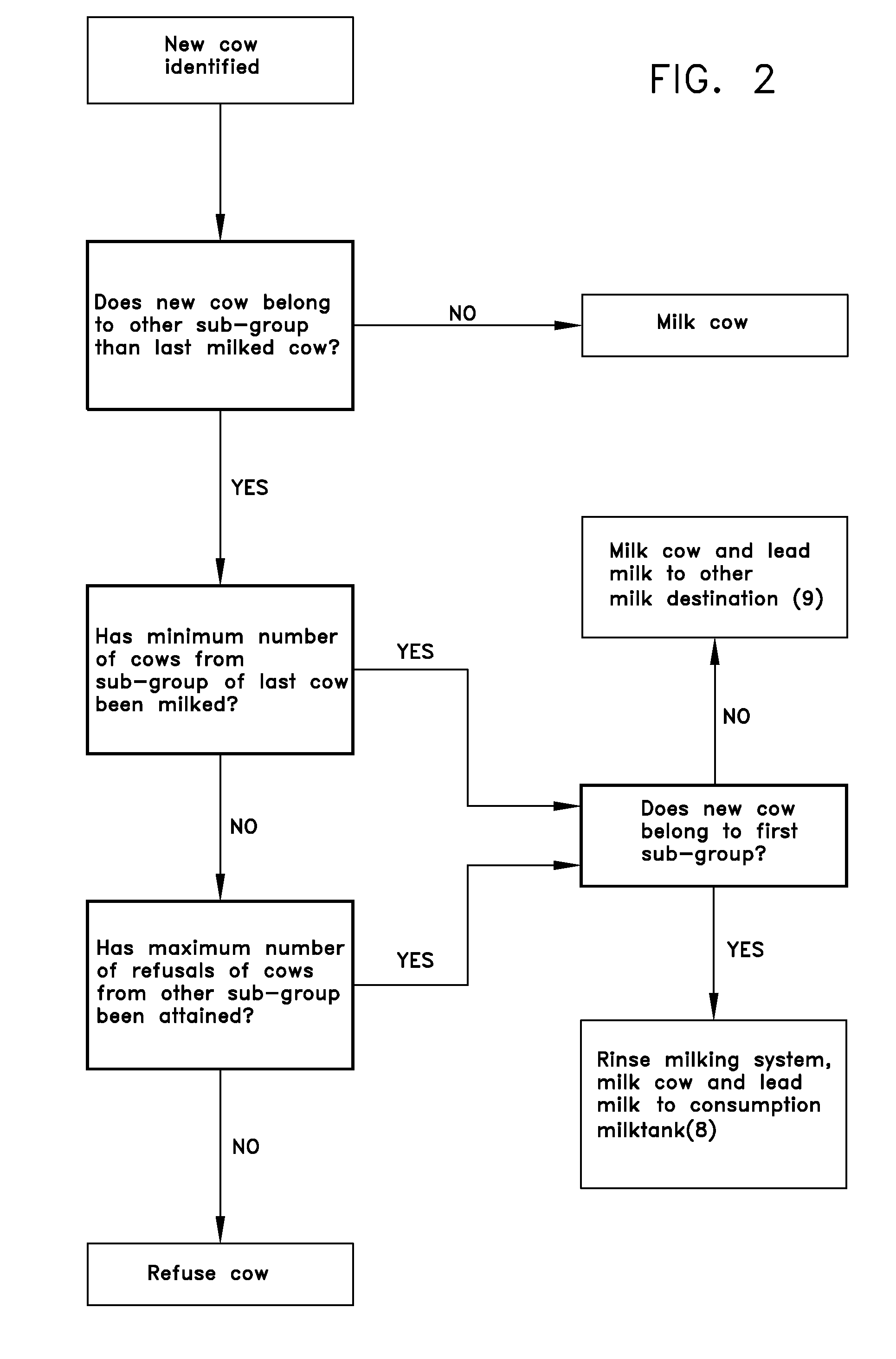Method of milking a group of dairy animals
a dairy animal and group technology, applied in the field of group milking dairy animals, can solve the problems of inability to collect different types of milk, no longer suitable for consumption, and long time-consuming flushing so as to achieve the effect of efficient use of the milking system
- Summary
- Abstract
- Description
- Claims
- Application Information
AI Technical Summary
Benefits of technology
Problems solved by technology
Method used
Image
Examples
Embodiment Construction
[0036]The following is a description of certain embodiments of the invention, given by way of example only and with reference to the drawings. FIG. 1 shows a construction according to the invention, denoted overall by reference numeral 1. The construction comprises a milking system 2 with a milking box 3 for receiving a dairy animal, and a milking robot 4 for placing milking cups 5 on the teats of the dairy animal. Each of the milking cups 5 is connected to a milking line 6 for taking the milk to a temporary milk reservoir 7, for example a milk glass, for collecting the milk during milking. Depending on the type of milk, the milk is passed from the temporary reservoir 7 to a reservoir 8 for milk for consumption or another destination 9, for example another milk reservoir or the sewer, after milking.
[0037]The milking system 2 can be used for milking a group of dairy animals, of which a first subgroup gives milk for consumption and a second subgroup gives separation milk. The milk for...
PUM
 Login to View More
Login to View More Abstract
Description
Claims
Application Information
 Login to View More
Login to View More - R&D
- Intellectual Property
- Life Sciences
- Materials
- Tech Scout
- Unparalleled Data Quality
- Higher Quality Content
- 60% Fewer Hallucinations
Browse by: Latest US Patents, China's latest patents, Technical Efficacy Thesaurus, Application Domain, Technology Topic, Popular Technical Reports.
© 2025 PatSnap. All rights reserved.Legal|Privacy policy|Modern Slavery Act Transparency Statement|Sitemap|About US| Contact US: help@patsnap.com



